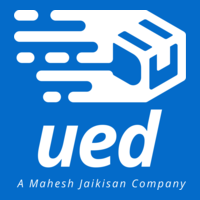Factory Audit and Quality Assurance
By adopting these robust audit and quality assurance practices, companies can ensure compliance with global standards, maintain operational efficiency, and deliver high-quality products consistently.
1. Factory Audit
A factory audit is a systematic evaluation of a manufacturing facility’s processes, operations, and infrastructure to ensure compliance with safety, efficiency, and regulatory standards. The primary objective is to identify areas for improvement, enhance operational efficiency, and ensure adherence to industry and legal requirements.
Key Areas of Factory Audit:
Infrastructure Inspection
Evaluate machinery, plant layout, and overall infrastructure to ensure proper installation and maintenance.
Assess facilities for durability, functionality, and safety compliance.
Operational Efficiency Review
Examine production workflows and material handling to identify inefficiencies.
Analyze supply chain management, procurement, and logistics to optimize operations.
Health and Safety Compliance
Conduct comprehensive checks to comply with OSHA, ISO, and local safety regulations.
Review emergency exit protocols, fire extinguishers, waste disposal, and overall workplace safety measures.
Regulatory Documentation Assessment
Ensure all required permits, certifications, and documentation are up-to-date and in compliance with government regulations.
Review labor laws, environmental standards, and operational documentation to avoid legal complications.
2. Quality Assurance Implementation
Quality Assurance focuses on maintaining product and process integrity by implementing measures that ensure adherence to established industry and company standards. It guarantees that the manufacturing processes meet quality benchmarks and customer expectations.
Key Components of Quality Assurance:
Product Testing and Inspection
Conduct random sampling, product testing, and comprehensive inspections at all stages of production.
Ensure compliance with ISO 9001 and other relevant quality standards.
Supplier Audits
Assess suppliers through on-site visits, inspections, and contract evaluations to maintain consistent quality throughout the supply chain.
Collaborate closely with suppliers to ensure adherence to quality agreements and certification requirements.
Process Validation and Control
Implement process validation protocols to maintain operational consistency and product accuracy.
Use tools like preventive maintenance schedules, process checkpoints, and quality controls.
Standard Operating Procedures (SOPs)
Develop and enforce SOPs for manufacturing, inspection, maintenance, and safety protocols to ensure operational integrity and quality compliance.
3. Continuous Improvement Initiatives
Ongoing initiatives aim to enhance efficiency, reduce waste, and drive operational excellence by implementing strategic enhancements across the facility.
Key Strategies for Continuous Improvement:
Lean Manufacturing Practices
Adopt Lean methodologies to reduce waste, optimize workflows, and improve overall production efficiency.
Focus on streamlining material movement, reducing cycle time, and enhancing productivity.
Six Sigma Methodologies
Apply Six Sigma tools to minimize defects, improve product quality, and achieve greater operational efficiency.
Use techniques like root cause analysis, process mapping, and statistical quality control.
Preventive Maintenance Plans
Develop and implement preventive maintenance schedules to ensure machinery reliability.
Conduct regular checks and updates, ensuring timely repairs and long-term operational continuity.
Employee Training and Development
Offer ongoing workshops, certifications, and training sessions to educate employees on quality assurance protocols, safety measures, and regulatory compliance.
4. Reporting and Documentation
Robust reporting and documentation ensure transparency, accountability, and compliance with regulatory standards while supporting audits and inspections.
Key Elements of Reporting and Documentation:
Factory Audit Reports
Provide detailed audit reports summarizing findings, areas for improvement, and corrective actions.
Compliance Documentation
Maintain comprehensive documentation, including permits, certifications, safety protocols, and production records.
Quality Control Documentation
Generate detailed quality control reports outlining product inspections, process validations, and compliance checks.
Action Plans for Continuous Improvement
Create strategic action plans with clear timelines and milestones to address audit findings, implement corrective measures, and drive ongoing improvements across operations.
Would you like more details for a specific industry or factory type?

